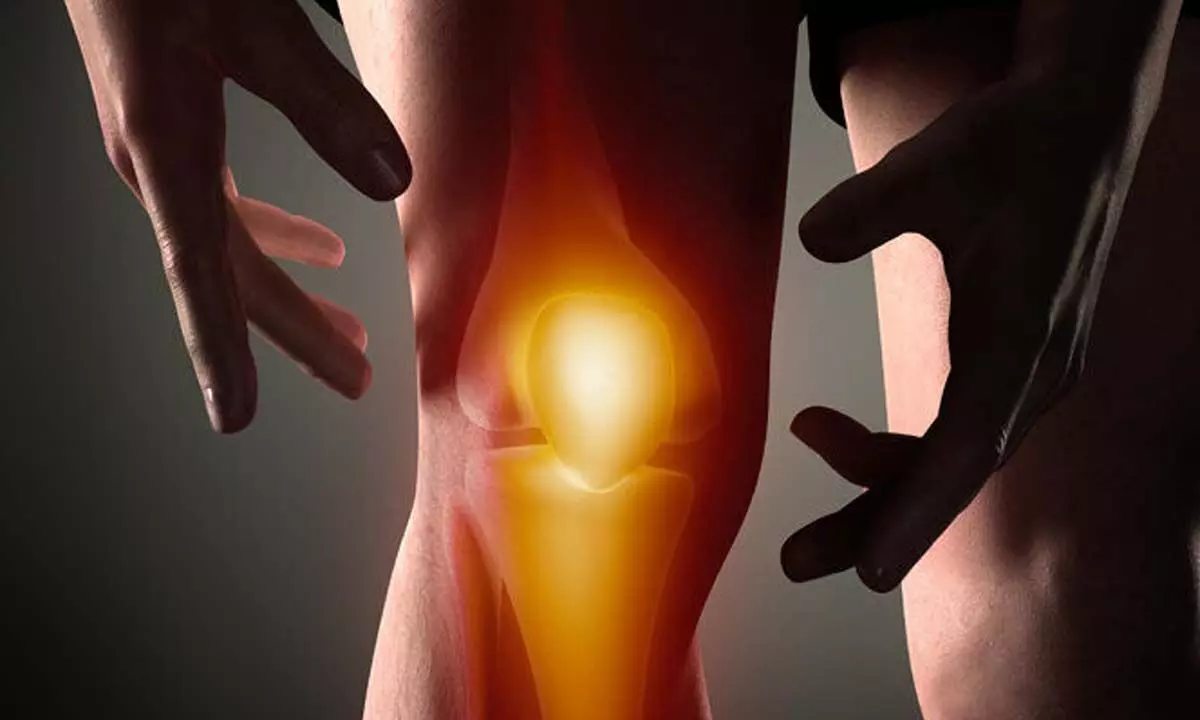Live
- Rekhachithram Review: An inventive thriller that blends nostalgia and mystery
- India Open 2025: Indian challenge ends as Satwik-Chirag go down in semi-finals
- Israel intercepts missile fired from Yemen toward Red Sea's Eilat
- Pravinkoodu Shappu Review: Pravinkoodu Shappu impresses with its visuals and performances but doesn't fully fulfill its potential
- Do not breach party discipline, No loose talk about party positions -Bhandari
- 'Celebrities and village sarpanch not safe, what about common people': Cong slams MahaYuti govt
- Lebanese President urges Israeli withdrawal from South Lebanon within deadline
- Legacy of NTR Lives On: Tributes Pour in on His 29th Death Anniversary
- 8th International Kite Festival Takes Flight at Mangaluru
- Kho Kho WC: India-W set up final clash vs Nepal with commanding win over South Africa-W
Just In
What are the benefits of laser assisted Arthroscopic surgery for knee Joint?


The laser Technology was 1st commercialized for military purposes in the year, 1960s in the US. Later on, Civilian applications inevitably emerged.
- Laser in general uses the principle that energy is not destructible but convertible from one form into another. Here, the electrical energy is converted into light energy
- The laser Technology was 1st commercialized for military purposes in the year, 1960s in the US. Later on, Civilian applications inevitably emerged, there are now more than 10 different types of lasers available for medical use.
Arthroscopic surgery for Osteoarthritis (OA) knee is not a new concept. During the past 50 years or so, before the widespread acceptance of Total Knee Replacement (TKR), Arthroscopic surgery, along with High Tibial Osteotomy occupied a prominent place in the Orthopedic Surgeon's arsenal.
The above surgeries (and still are) in place in the Orthopedic Surgeon's arsenal. These surgeries (and still are) in sync with the varied socio-cultural requirements of our patients. This is most useful in Asiatic Cultures, which require squatting for toilet, sitting down on the floor or kneeling for prayers. Walking or uneven surfaces and negotiating staircases, again a prominent requirement in these nations, need a high degree of proprioception that artificial knees cannot achieve for obvious reasons.
There exists a huge mismatch between what the patients expect from the surgeons and what they can give them. Instead of modifying the treatment methods in order to cope up with their socio-cultural requirement, they tend impose a band on a whole set of activities on them.
Use of Laser in Arthroscopic surgery of the knee
The laser Technology was 1st commercialized for military purposes in the year, 1960s in the US. Later on, Civilian applications inevitably emerged, there are now more than 10 different types of lasers available for medical use.
Laser in general uses the principle that energy is not destructible but convertible from one form into another. Here, the electrical energy is converted into light energy. Both Theories of light (particle and wave theories) are used, that is Photon beam of single wavelength is focused onto a target tissue by transmission through a fibre, which is similar to the fibre optic cable used in Endoscopy.
This photon beam interacts with tissues in varied ways, thus produces various effects on them. This has got tremendous clinical implications.
The Holmium: YAG LASER works in a liquid medium and hence it is suitable for Arthroscopic and Urology applications. This is a laser beam having wavelength in infrared spectrum i.e 2100 nm.
The laser energy is then transmitted to the largest tissue through a fibre of diameter 350 microns, inserted into the joint through a needle probe of diameter 1.8 mm.
Interacting with the intra-articular tissues, it has got following effects.
Photothermal Effect
Interacting with the intra-articular tissues, it has got following effects.
The Holmium: YAG LASER works in a liquid medium and hence it is suitable for Arthroscopic and Urology applications. This a laser beam having wavelength in infrared spectrum i.e2100 nm.
The Laser energy is transmitted to the targe tissue through a fibre of diameter 350 microns, inserted into the joint through a needle probe of diameter 1.8 mm.
Interacting with the intra-articular tissues, it has got following effects.
Photoablative effect
Interacting with the intra-articular tissues, it has got following effects. The laser fibre in contact with tissues can ablate them by bursting the cell walls without formation of free carbon radicles. The Fibre-tip temperature is 900 degree -C so that sealing of surrounding the bleeding vessels is easy. This is useful in Synovectomy in Rheumatoid, Psoriasis, Gout and Hemophilia.
This is also very useful in Adhesiolysis in Post-trauma situations. This can prevent rapid onset of secondary OA.
Electromechanical Effect
Contact beam application is useful in excision of Osteophytes and bony prominences as in Patello-femoral joint and Footballer's ankle. A major use in OA knee is for Micro fractures in varied situations where multiple areas are involved, as against ACT.
in all these situations, minimal or no residual joint debris is a stand out feature of Laser usage. Hence, Postop synovitis is minimal, morbidity is low and rehabilitation is faster.
Advantages of using Laser for Arthroscopic Surgery of the Knee
• Minimal tissue debris
• Minimal collateral tissue damage
• Haemostatic effect
• Can do bloodless Microfracture easily
• Osteophyte excision easy
• Can reach crevices of small size knees easily
Simply using LASER will not give good results in Arthroscopic surgery for OA Knee. Three more aspects are equally important:
1) Clinical suspicion of cartilage-at-risk situations
2) Early diagnosis of cartilage damage by MRI scan or Cartigram
3) Correction of biomechanics of weight transmission by High Tibial Osteotomy whenever indicated and feasible
To conclude, in the age group of 50 to 60 years, where most patients having moderate OA (not Tricompartmental) lie, we must try make every effort to increase the life and performance of the natural knee. The least that, we owe these patients is to avoid a Revision TKR in their lifetime.

© 2025 Hyderabad Media House Limited/The Hans India. All rights reserved. Powered by hocalwire.com






